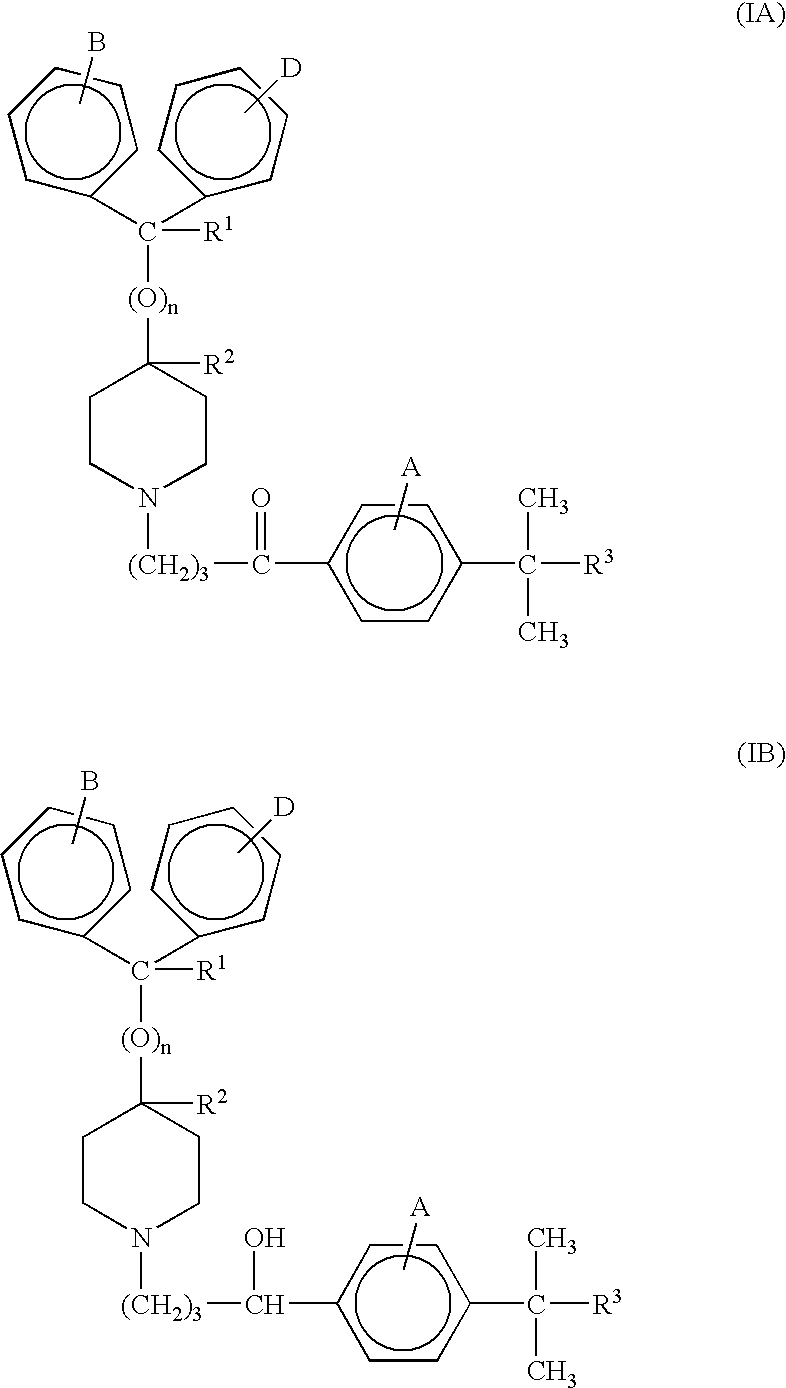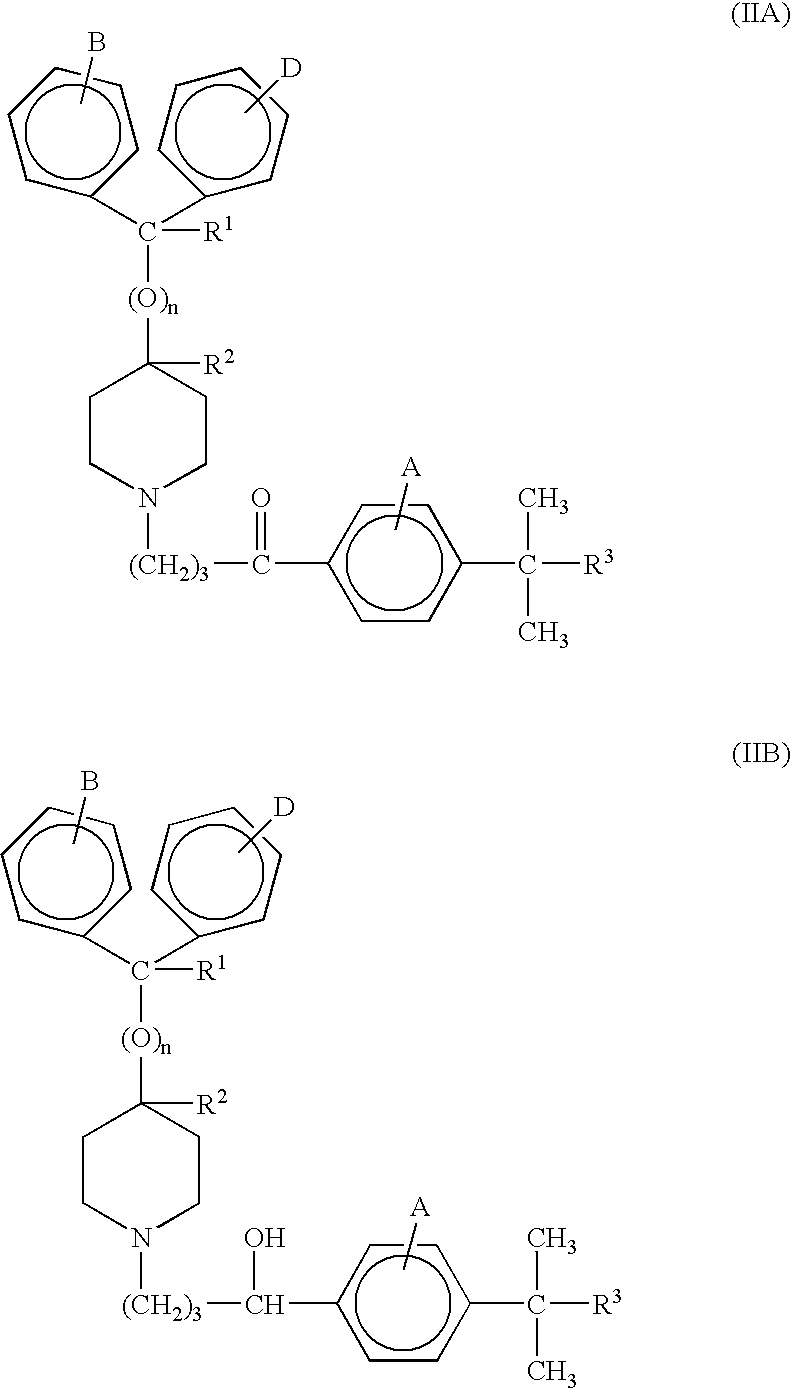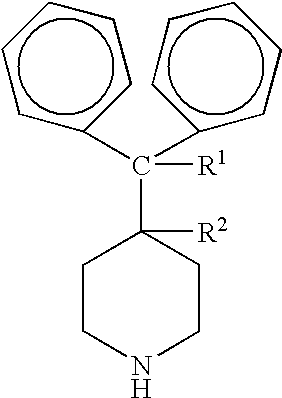Process for the production of piperidine derivatives with microorganisms
a technology of piperidine and microorganisms, which is applied in the direction of drug compositions, immunological disorders, cardiovascular disorders, etc., can solve the problems of unfavorable commercialization and production, low initial yield of piperidine derivatives, and potential life-threatening effects, and achieve significant strain improvement, processing and manufacturing advantages, and the effect of reducing the risk of death
- Summary
- Abstract
- Description
- Claims
- Application Information
AI Technical Summary
Benefits of technology
Problems solved by technology
Method used
Image
Examples
example 1
Screening for Efficient Microbial Strains for the Transformation
Microbial cultures for reactions were inoculated using procedures described above, and specified in Table 2 below. Reaction inocula were prepared for each microorganism listed in Table 2 with 2.5 ml of each inoculum being added to 22.5 ml of medium in a 125 ml Delong flask and incubated for 24 hours at 29° C. and 225 revolutions per minute (rpm) on an orbital shaker. After this time, the pH of each culture was recorded and 0.5 ml of the cultures were transferred to individual wells of a standard format 48-well polypropylene plate (nominal volume 5 ml / well), covered with glass wool, cheesecloth, teflon-coated fabric, or other suitable gas-permeable barrier, and the reaction was initiated by the addition of 5 μl of a 25 g / L DMF stock solution of terfenadine acid metabolite (final reaction concentration of 250 mg / L). Reaction plates were incubated at 29° C. and 225 rpm inside controlled atmosphere incubation boxes and we...
example 2
25 ml of soybean flour medium in a 125 ml Delong flask is inoculated with a Streptomyces rimosus (NRRL-2234) obtained from solid slant culture, as described in Example 1. After incubating at 29° C. and 225 rpm for 24 hr, 500 μl of culture solution (pH 5.0) was transferred to a well of a 48-deepwell plate and 125 μg of terfenadine dissolved in 5 μl of DMF was added to the culture. After further cultivation in an incubation chamber at 29° C. for 7 days, the resulting microbial broth was extracted with acetonitrile and ethyl acetate. The organic phase was dried over sodium sulfate, and, then, the solvent was removed. The residue was redissolved in DMF and analyzed by HPLC-MS. Integration indicated that 76% of the recovered material was TAM.
example 3
As described above, 2.5 ml of a frozen culture of Gliocladium deliquescens was cultivated in 25 ml of culture medium at pH 7 for 24 hours. 500 μl of the liquid culture was transferred to a well of a 48-deepwell plate and 125 μg of terfenadine dissolved in 5 μl of DMF was added to the culture and incubated at 29° C. for 1 week in an incubation chamber. Product recovery and analysis demonstrated that this procedure yielded 39% TAM.
PUM
 Login to View More
Login to View More Abstract
Description
Claims
Application Information
 Login to View More
Login to View More - R&D
- Intellectual Property
- Life Sciences
- Materials
- Tech Scout
- Unparalleled Data Quality
- Higher Quality Content
- 60% Fewer Hallucinations
Browse by: Latest US Patents, China's latest patents, Technical Efficacy Thesaurus, Application Domain, Technology Topic, Popular Technical Reports.
© 2025 PatSnap. All rights reserved.Legal|Privacy policy|Modern Slavery Act Transparency Statement|Sitemap|About US| Contact US: help@patsnap.com



